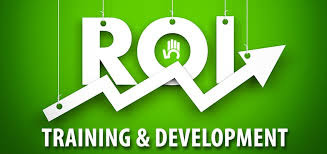Shattering the Glass Ceiling: Is There Still a Gender Barrier in the Corporate World?
First looking at this video
(leap.club membership,2021)
For decades, women have fought tirelessly to break into the
corporate world and break the glass ceiling – that invisible barrier hindering
their rise to leadership positions. While progress has undoubtedly been made,
the question remains, is there still a gender barrier in today's corporate
landscape?
The answer, unfortunately, is complex. There are significant steps
towards equality, with more women holding leadership roles than ever before.
However, challenges persist, creating an uneven playing field that limits
women's full potential. Need to a closer look at the evidence;
- The Persistence of Bias- Unconscious bias, fixed stereotypes about gender roles, continue to outbreak workplaces. Men are often seen as inherently more qualified for leadership positions, even when qualifications are equal. This bias can influence everything from hiring decisions to promotions, ultimately sidelining talented women.
- The Wage Gap- The gender pay gap remains in reality. Women, on average, still earn significantly less than men for the same work. This disparity discourages women from pursuing leadership roles, where the pay gap tends to expand further.
- The Broken Ladder - Women often face a lack of access to mentorship and sponsorship opportunities, which are crucial for career advancement. These networks, traditionally dominated by men, can leave women feeling unsupported and isolated.
- The Juggle Act/Multi-tasking - Work-life balance continues to be a bigger challenge for women. Social expectations often place the burden of childcare and domestic responsibilities on women, hindering their ability to take on demanding leadership roles that require long hours.
- The Pipeline Problem- In certain industries, particularly STEM fields, women are underrepresented at entry levels. This creates a limited pool of qualified women to rise to leadership positions later in their careers.
However, there are actions to avoid these;
- Increased Awareness- Companies are becoming more aware of gender bias and are actively working to address it through diversity and inclusion initiatives.
- Flexible Work Arrangements- The rise of flexible work arrangements and remote work opportunities can help women manage work-life balance more effectively.
- Quotas and Targets- Some companies are implementing quotas and targets for women in leadership roles, actively pushing for a more balanced representation.
- Mentorship Programs- More mentorship programs specifically designed for women are emerging, providing them with the guidance and support they need to succeed.
The Road Ahead
While progress is underway, significant work remains to take
apart the remaining gender barriers. There are some key steps as follows;
Unconscious Bias Training- Companies should invest in
training programs that educate employees about unconscious bias and its impact
on decision-making.
Mentorship and Sponsorship Programs- Creating robust
mentorship and sponsorship programs specifically for women can provide them
with invaluable support and career guidance.
Fair and Transparent Policies- Implementing clear and
transparent policies around hiring, promotion, and compensation can ensure a
level playing field for all employees.
Flexible Work Options- Offering flexible work
arrangements allows women to manage work-life balance more effectively and
pursue leadership roles without sacrificing family commitments.
Conclusion
The fight for gender equality in the corporate world is far
from over. However, by acknowledging the remaining barriers, taking concrete
steps to address them, and celebrating the achievements of women leaders, we
can move closer to a future where talent, not gender, determines career
success. In the future, the glass ceiling will not just be cracked, it will be
shattered entirely.
“While shedding light to these challenges, it's
crucial to recognize how far people have come to their closed-minded perspectives
on gender. The ongoing struggle for equality has catalyzed the transformative
changes, made by the courageous historical figures who dared to challenge societal
norms and speak out against the societal norms. It's thanks to them we are
living in the world we live in today. A historical figure that comes to mind is Malala Yousuf, who has relentlessly fought for the rights of
every girl to education. Despite being targeted in a horrifying attack by the
extremist group Taliban, she preserved in her advocacy. Today, while there is
still a long way to go, Malala’s efforts have transformed access to education
for girls.” (Sangiah,2024)
Reference List
Leap.club membership (2019) #taketheleap – gender inequality
in the workplace [video]. Available from https://www.youtube.com/watch?v=2u8ea9oMTqc
[accessed on 12.04.2024]
Sangiah,Y,D (2024) Exploring Barries to Achieving True Gender
Equality [Linkedin]. 25 March. Available from https://www.linkedin.com/pulse/exploring-barriers-achieving-true-gender-equality-chasmi-devi-sangiah-lcs5c/?trackingId=7COVJ5xwScujQGQbyyz4GA%3D%3D
[accessed on 12.04.2024]



This thorough investigation of gender hurdles in the workplace offers insightful information on the continuous obstacles women must overcome to achieve equality. The essay provides a fair assessment of the way towards gender parity by pointing out enduring problems like unconscious prejudice and the wage gap and suggesting practical fixes like mentorship programs and flexible work schedules. The mention of Malala Yousuf also acts as a potent reminder of the transformational power of people who advocate for gender equality on a worldwide level.
ReplyDeleteAsper the local context , gender inequality in the Asian corporate world requires a multifaceted approach that includes legal reforms, cultural shifts, investments in education and skills development, and initiatives to promote work-life balance and women's leadership. By tackling these challenges head-on and leveraging emerging opportunities, the Asian region can make significant strides towards achieving gender equality in the corporate sector as explain above
ReplyDeleteThis article offers a poignant examination of the persistent gender barriers in today's corporate landscape, juxtaposed with the strides made toward gender equality. It delves into the complexities of unconscious bias, wage gaps, and limited opportunities faced by women, while also highlighting actionable steps for progress. The inclusion of historical figures like Malala Yousuf underscores the ongoing fight for equality. By shedding light on these challenges and celebrating the courage of trailblazers, it inspires hope for a future where talent eclipses gender, fostering a more inclusive and equitable workplace for all.
ReplyDeleteExamining persistent gender disparities in corporate leadership, analyzing systemic barriers, advocating for equity, and promoting inclusive policies to break the glass ceiling."
ReplyDelete